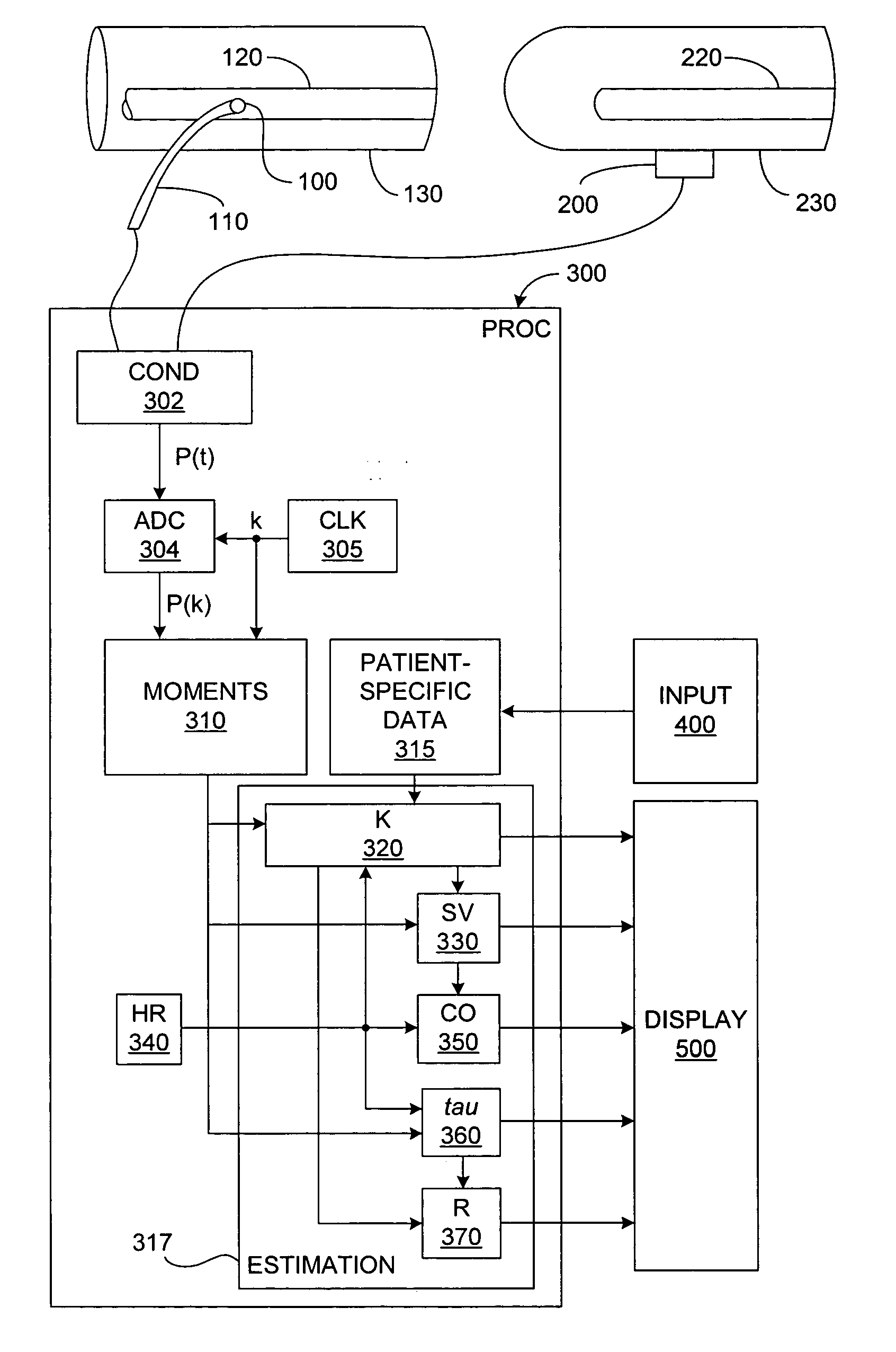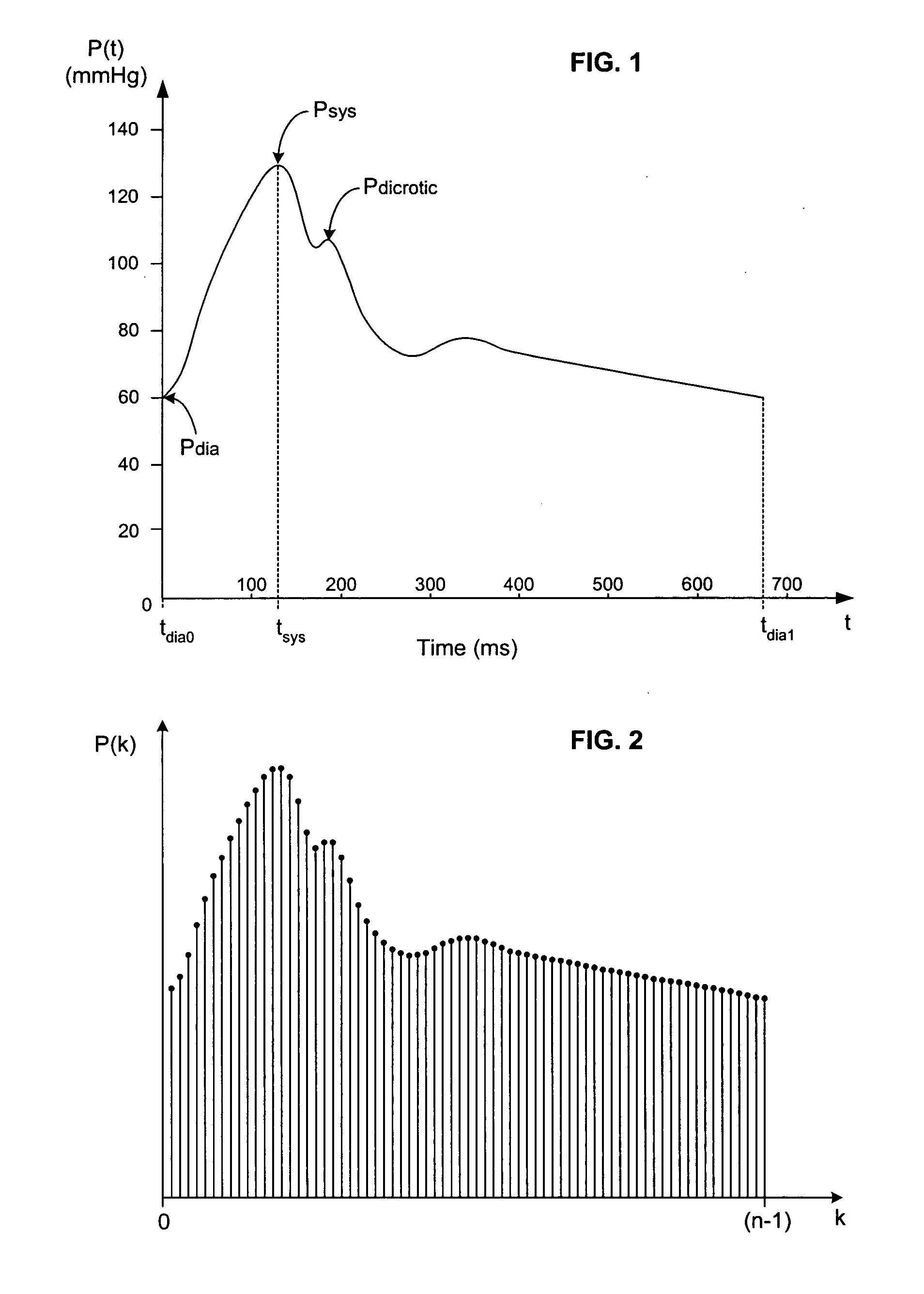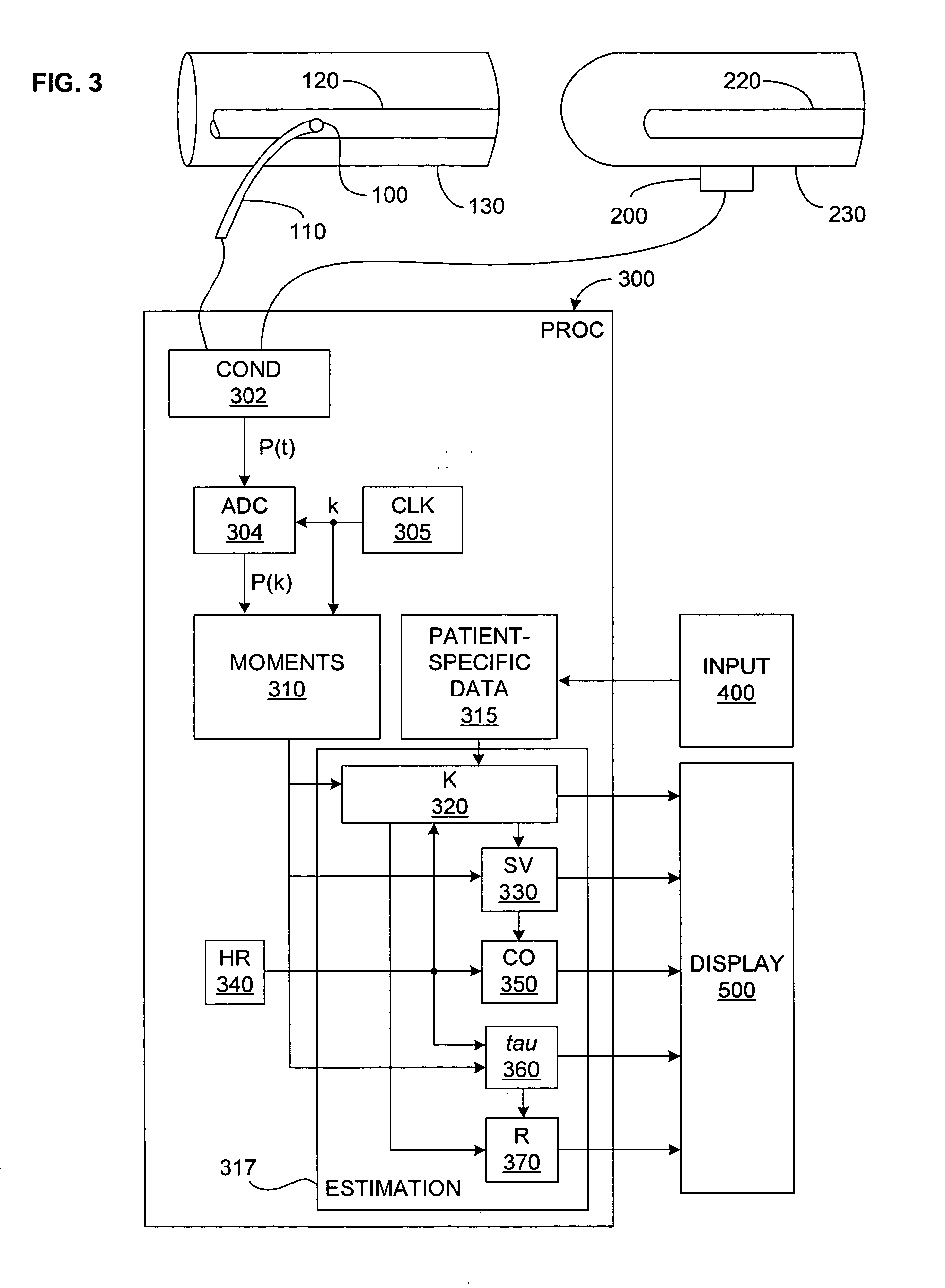Arterial pressure-based, automatic determination of a cardiovascular parameter
a technology of automatic determination and heart rate, applied in the field of hemodynamic monitoring, can solve the problems of insufficient co-measurement accuracy, potential danger of heart catheterization, and few hospitals without conventional equipment to monitor cardiac outpu
- Summary
- Abstract
- Description
- Claims
- Application Information
AI Technical Summary
Benefits of technology
Problems solved by technology
Method used
Image
Examples
Embodiment Construction
[0028] Introduction
[0029] In broadest terms, the invention involves the determination of a cardiovascular parameter such as the compliance factor (such as K or C in the formulas given above) as a multi-parameter function of not only mean arterial pressure, which corresponds the first moment of the blood pressure waveform, but also of one or more higher-order moments of the waveform as well. Patient-specific data is preferably also incorporated in the multi-parameter function as well.
[0030] The organization of this description is: First, the theoretical basis of the invention is discussed. This is followed by an explanation of the main steps of a method to use the theory, then a description of a system that implements the method.
[0031] The invention may be used to advantage with any type of subject, whether human or animal. Because it is anticipated that the most common use of the invention will be on humans in a diagnostic setting, the invention is described below primarily in us...
PUM
 Login to View More
Login to View More Abstract
Description
Claims
Application Information
 Login to View More
Login to View More - R&D
- Intellectual Property
- Life Sciences
- Materials
- Tech Scout
- Unparalleled Data Quality
- Higher Quality Content
- 60% Fewer Hallucinations
Browse by: Latest US Patents, China's latest patents, Technical Efficacy Thesaurus, Application Domain, Technology Topic, Popular Technical Reports.
© 2025 PatSnap. All rights reserved.Legal|Privacy policy|Modern Slavery Act Transparency Statement|Sitemap|About US| Contact US: help@patsnap.com



